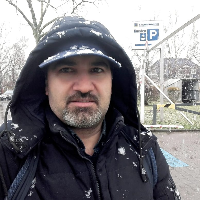Modeling the Effect of Street Orientation on the Air Pollution Dispersion (District Six of Tehran Municipality)
Today, urban development and air pollution are the most important issues concerning urban climate that can affect the quality of urban life. Despite the significant progress made in the fuel and engine technology, emission of pollutants in urban environments is still prevalent. As in many other countries, the environmental issue is particularly evident in the large cities of Iran such as Tehran, Tabriz, Isfahan, Shiraz, Arak, and Karaj. The rapid urbanization, industrialization, and increasing trend in the use of motor vehicles have caused numerous environmental issues, including the production and distribution of different types of air pollutant, especially in Tehran, the capital. Tehran’s confinement by mountains and meteorological factors such as temperature inversion, the persistence of high-pressure systems with cold air, and local winds exacerbate pollution. Hence, numerous studies have been conducted on air pollution in Tehran. The results have indicated that 73% to 85.5% of the air pollution observed at urban stations is caused by temperature inversions, which are influenced by high pressure and surface radiation. According to the above research, the key factors involved in the spread of pollution over the streets besides the spatial and natural factors that can affect the distribution of air pollutants (i.e. geographic location, topography, etc.) include the arrangement of the buildings, particularly in terms of street width and orientation, distance, and intersections. It should be noted given the significance of the issue that the pollution can have extensive effects although it occurs at the street level, due to the interaction of the dispersal and diffusion of pollutants through meteorological conditions (wind speed and direction and atmospheric stability), the configuration of buildings, and the orientation of streets. Therefore, the main purpose of this research was to specify the characteristics of pollutant flow and dispersion on urban passages in micro scale. For that purpose, the meteorological data, including air temperature, relative humidity, and wind speed and direction, were extracted from Iran Meteorological Organization (IMO) Geophysics Weather Station (the closest station to the area under investigation) for a 20-year statistical period (1991-2010). Two areas (1 and 2) in Municipal District 6 were specified as making up the area under study in this research. Then, the pollutant dispersion data were obtained based on the relationship between traffic volume and pollutant production during two winter and summer months (July and January) and at three times of the day (morning, midday, and afternoon). Finally, the distribution of air pollutants was simulated using the ENVI-met microscale model for building configuration and street orientation in the area under investigation. The results demonstrated that street and pathway orientation plays an important role in the accumulation or distribution of pollutants. Accordingly, the density of pollutants is higher in streets that are perpendicular to the prevailing wind direction. Furthermore, the concentration of pollutants in the main streets of the area under study exhibited a significant relationship with their directions. Pollutant concentration was moderate in streets with prevailing north winds, while the highest and lowest amounts of pollutant concentration were observed in streets with south and southwest winds, respectively. It can be concluded that consideration of the climate conditions in urban design and development (wind speed/direction in particular) can be effective in improvement of air quality in urban areas.
-
A synoptic analysis on the effect of the polar vortex on the extreme and widespread precipitation in the Midwest of Iran
Faramarz Khoshakhlagh *, , Nasim Jahani
Journal of Climate Research, -
Carbon storage capacity in a city with a cold and mountainous climate:the case study of Urmia city and Suburb
Roghayeh Ansari-Golenji, *, Faeze Shoja
Journal of Sustainable City, -
Synoptic-Remote Sensing Analysis of the Persistence of Air Pollution in the Southern Slopes of Alborz (Tehran, Alborz and Qazvin Metropolitan)
Ghasem Azizi *, Mohammad Naji,
Geography and Sustainability of Environment, -
Quantification, The first challenge of drought risk assessment and management
Sousan Heidari, *, Ghasem Azizi,
Journal of Geographical Research on Desert Areas,




